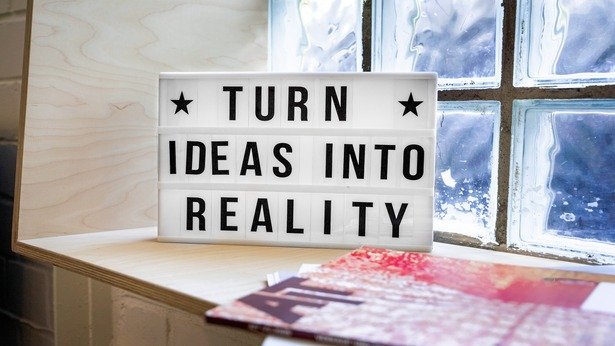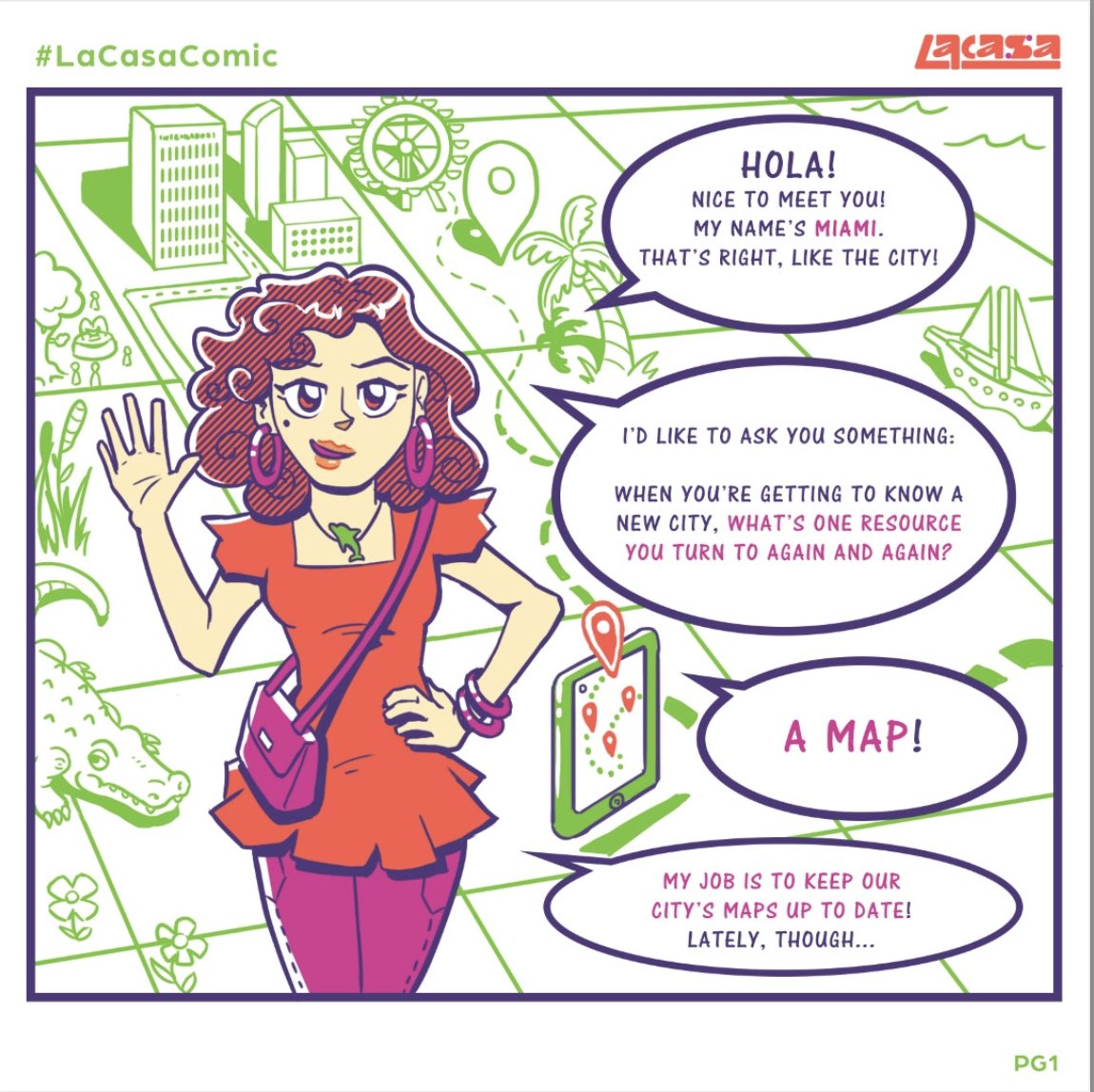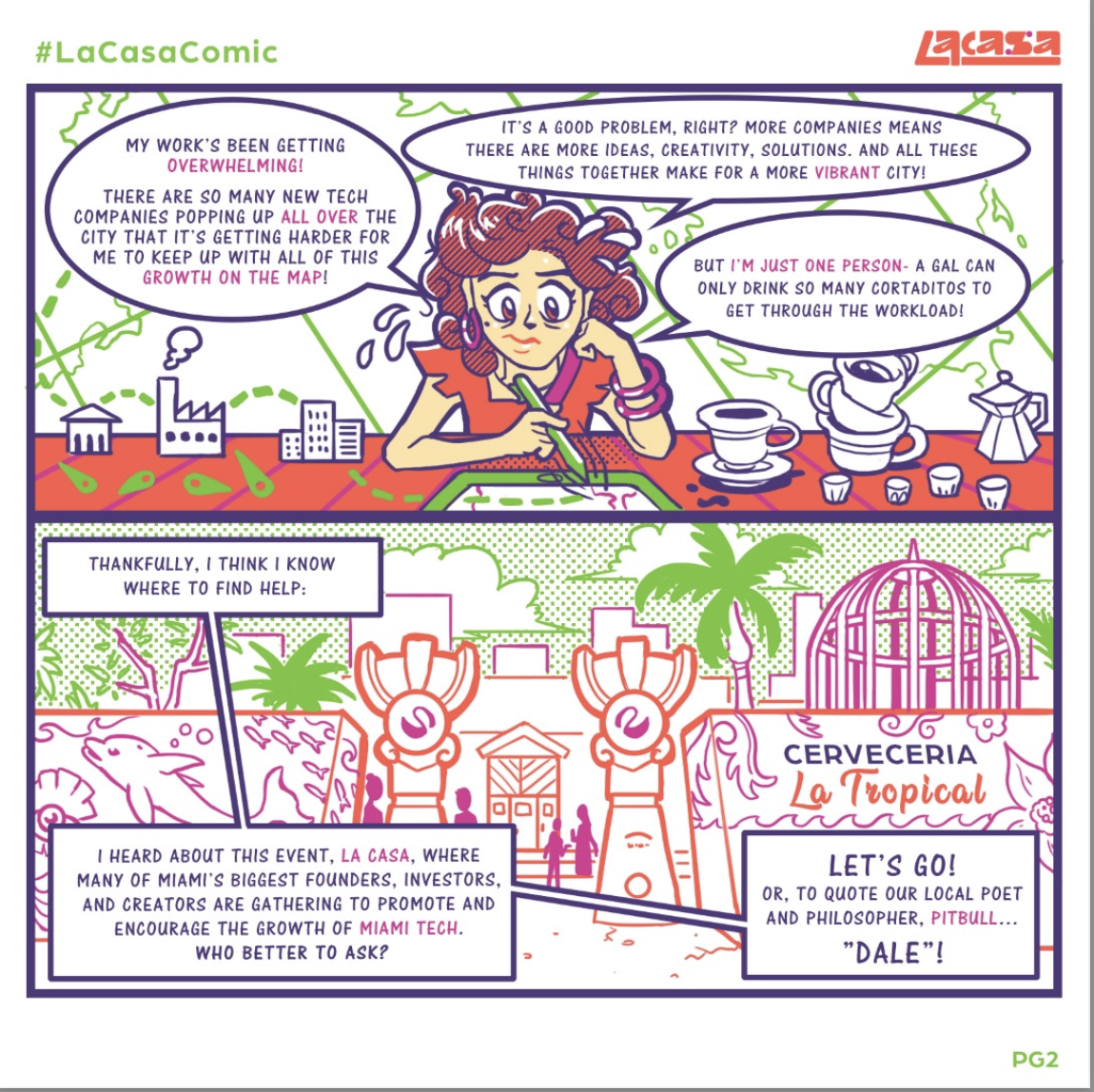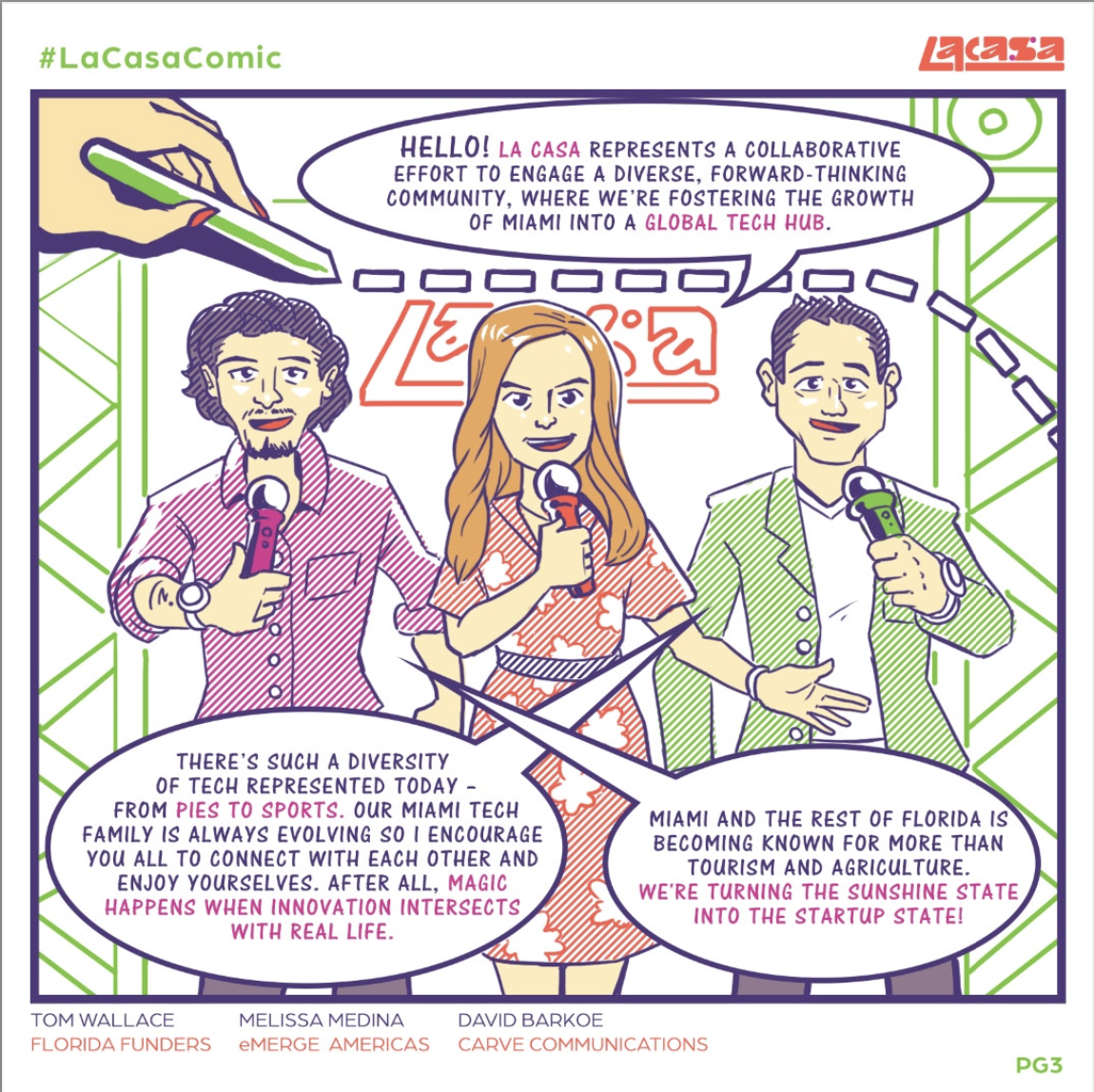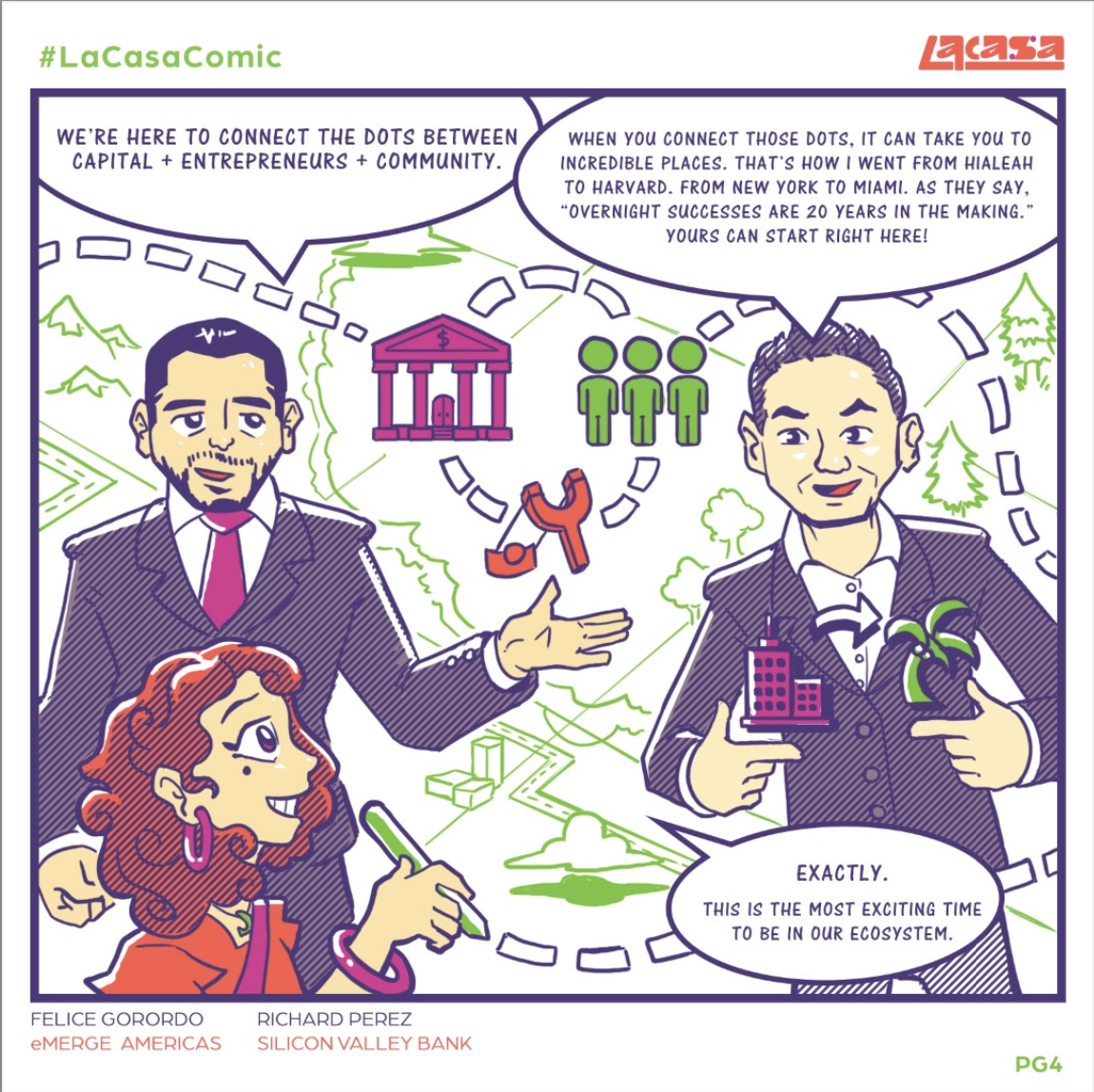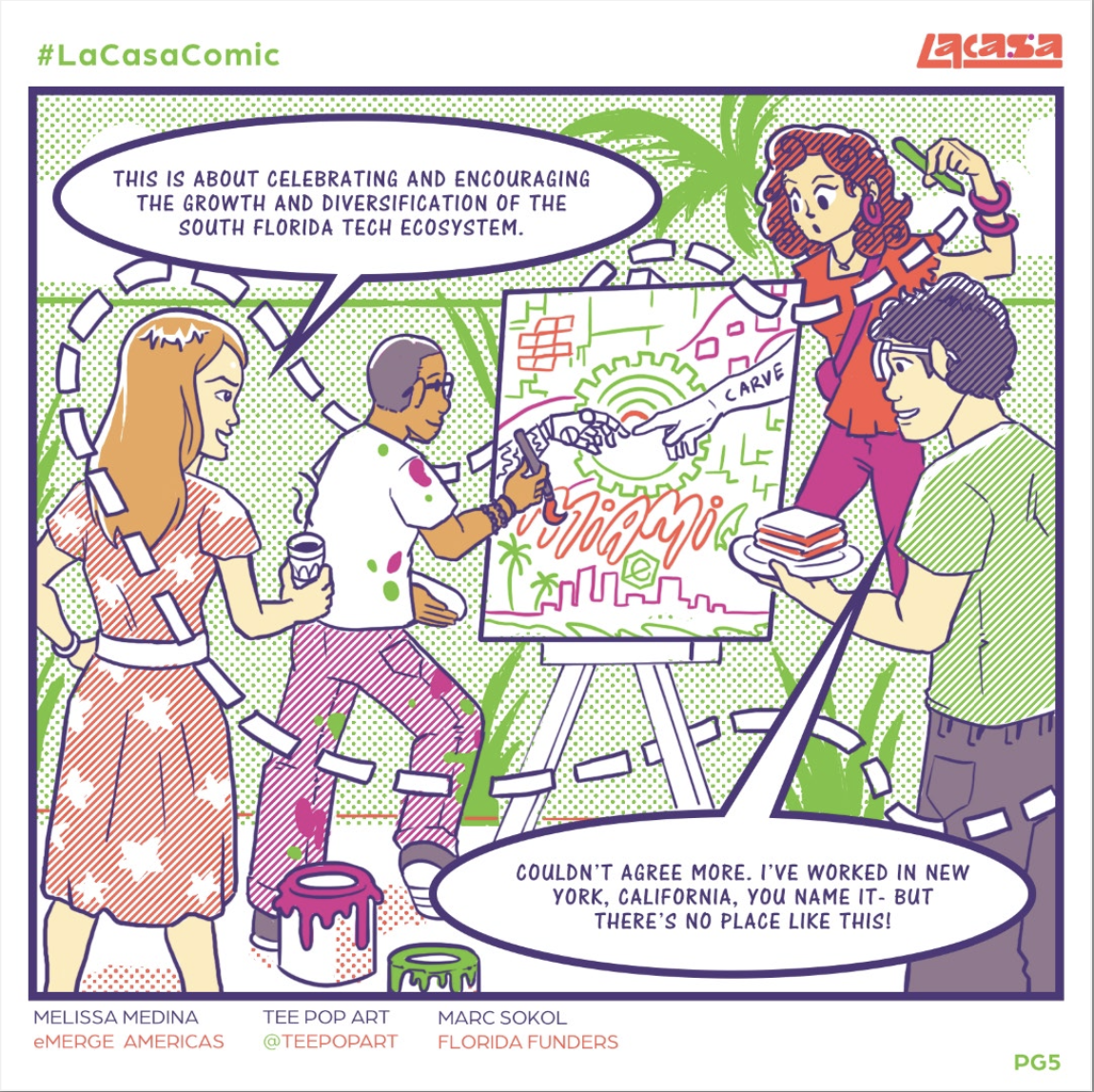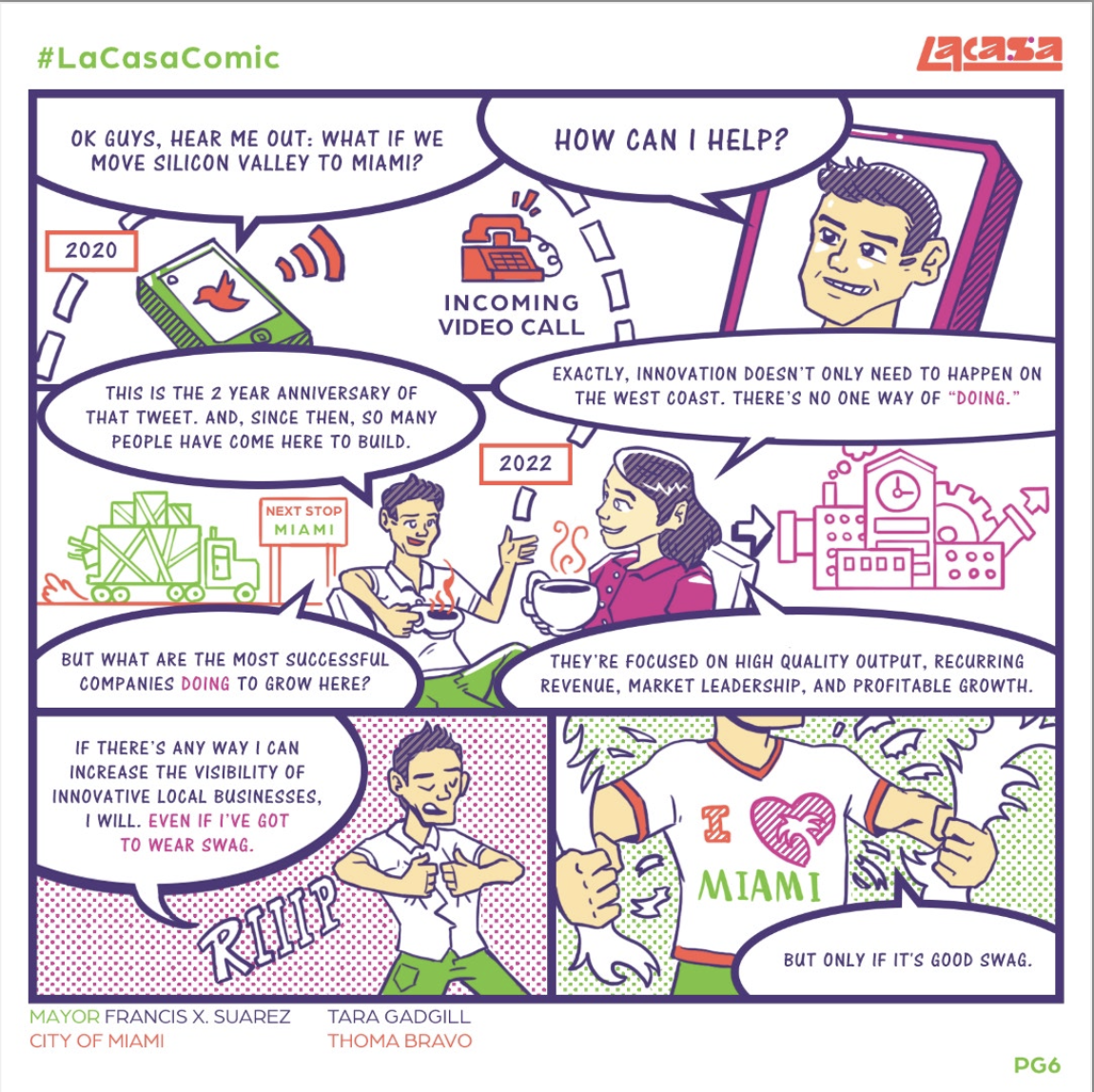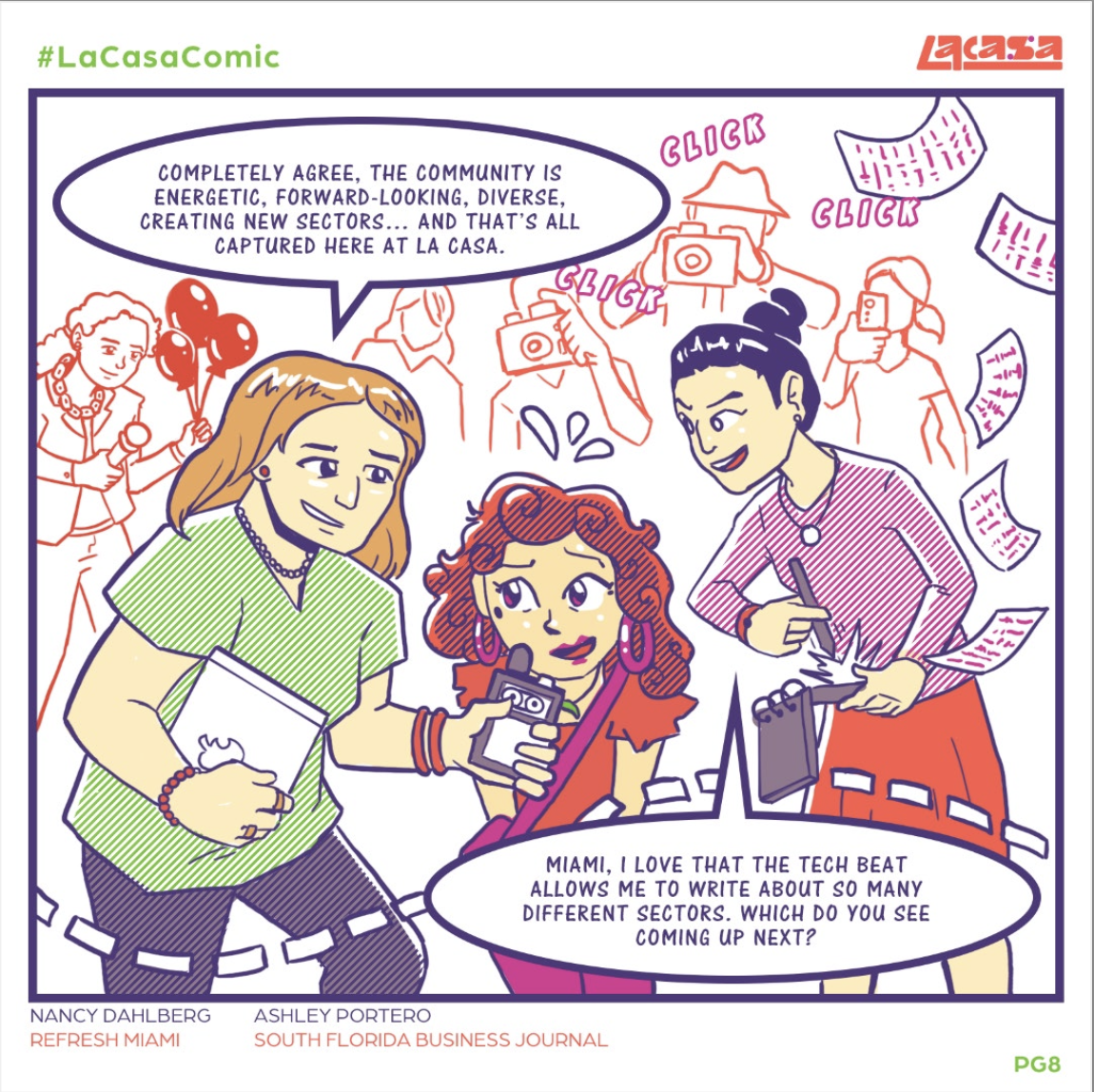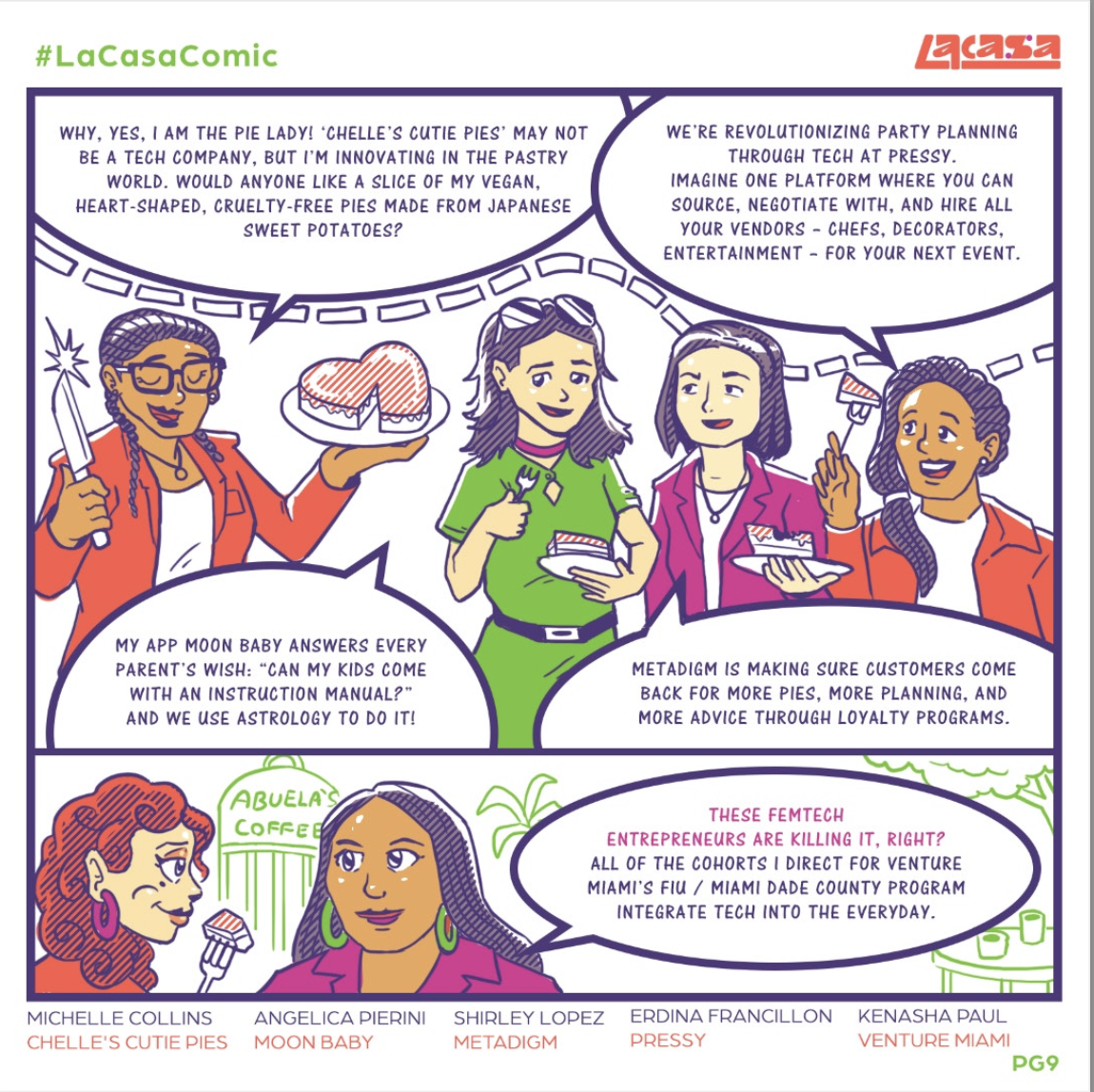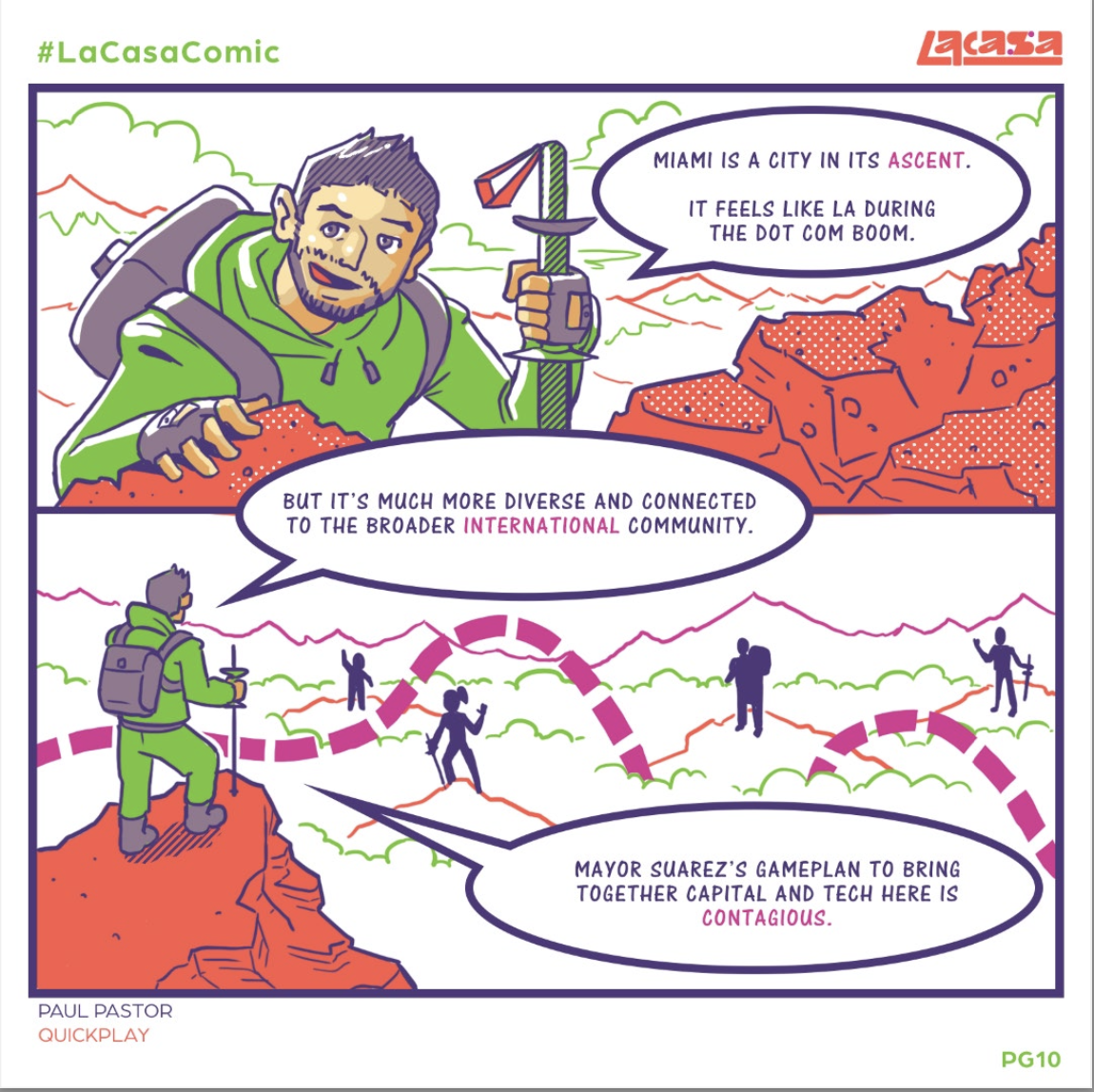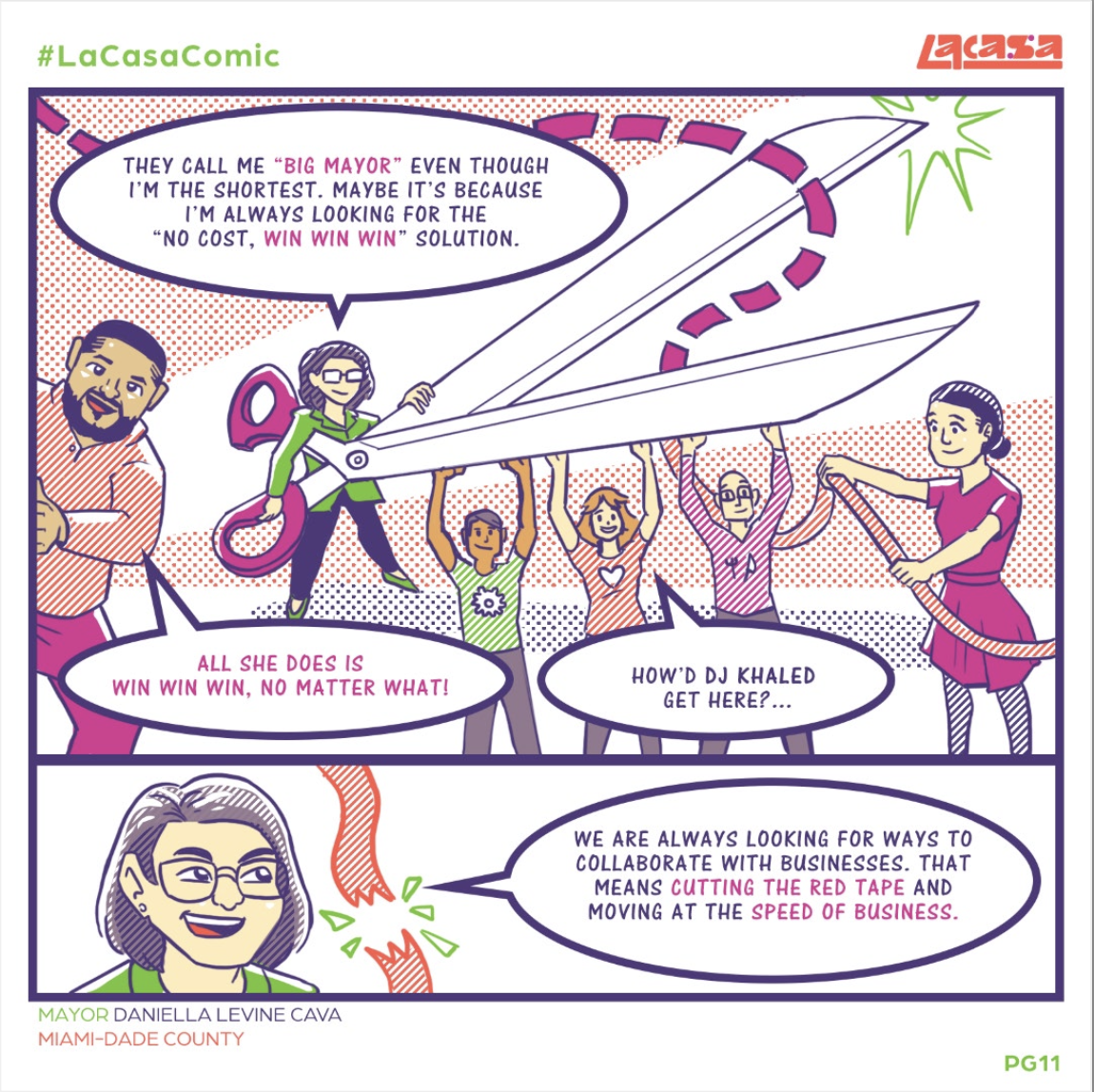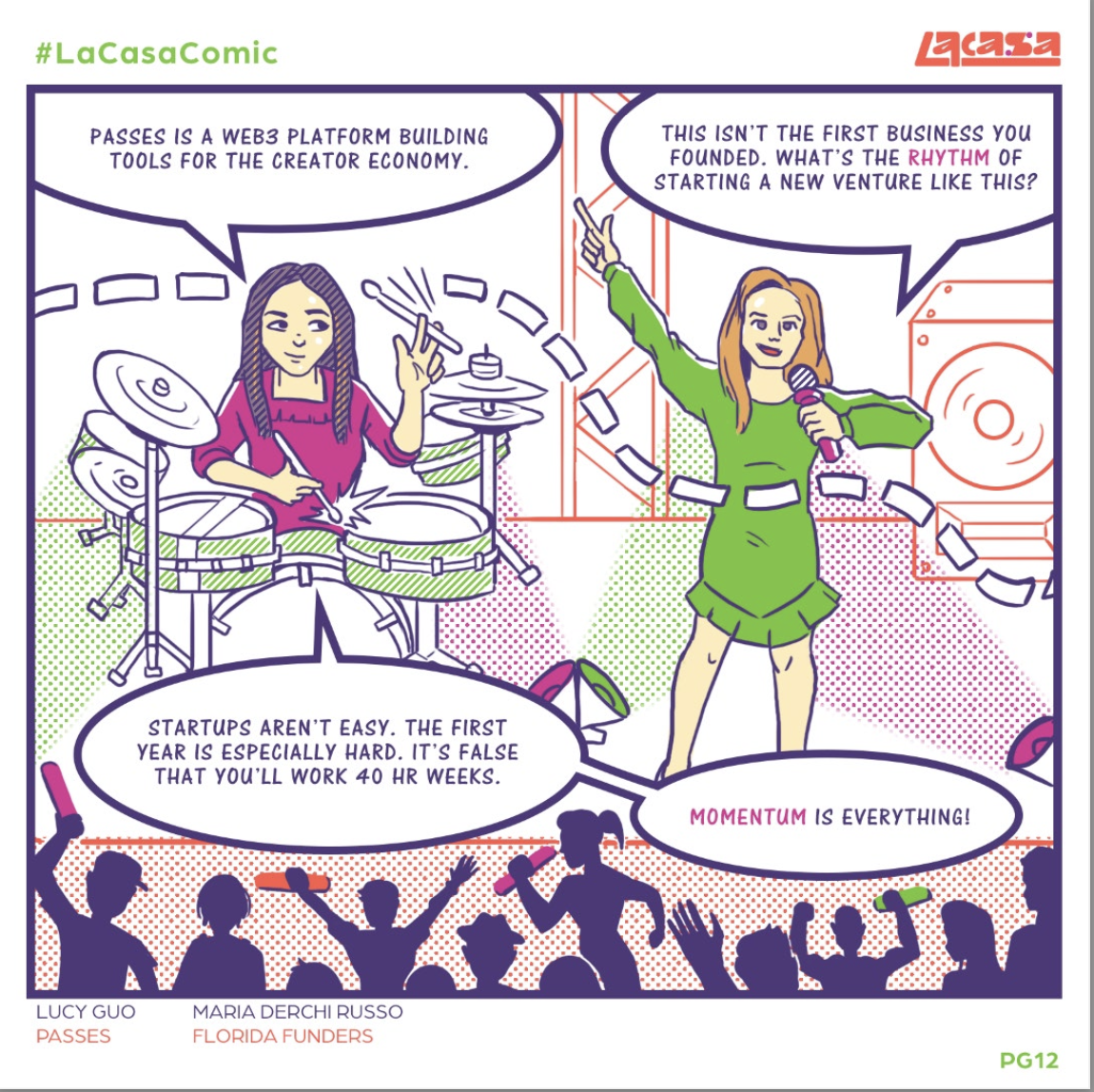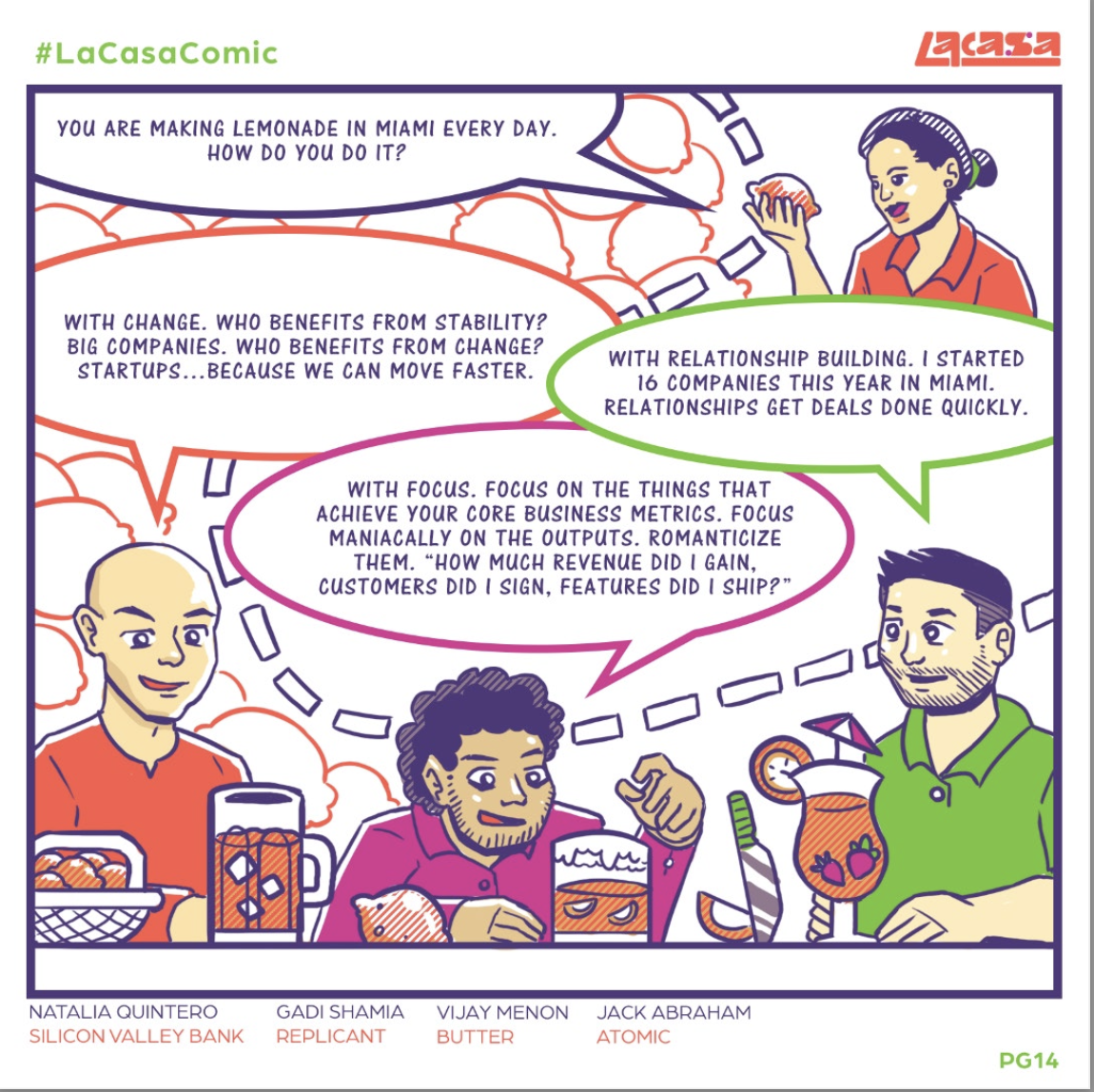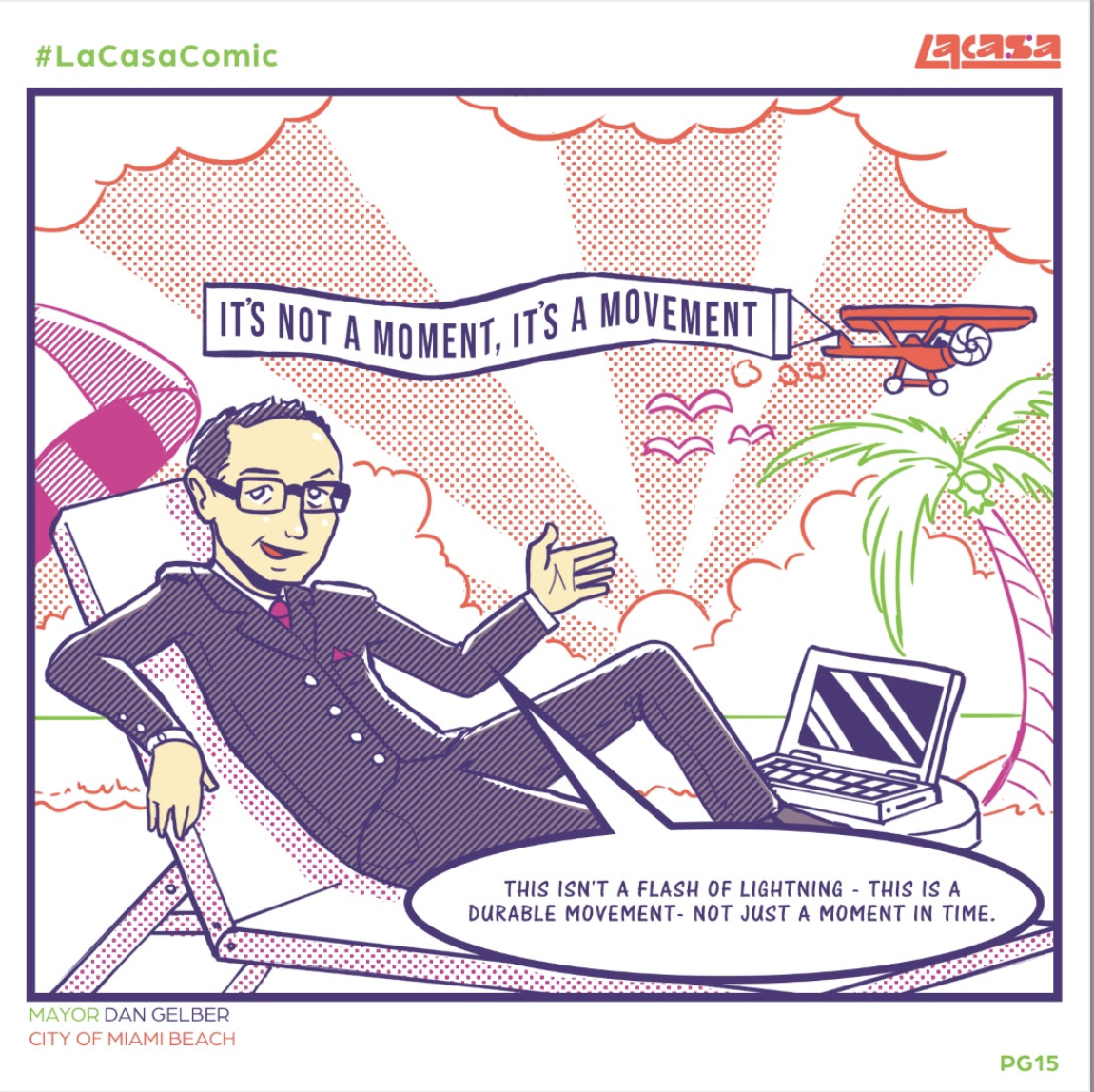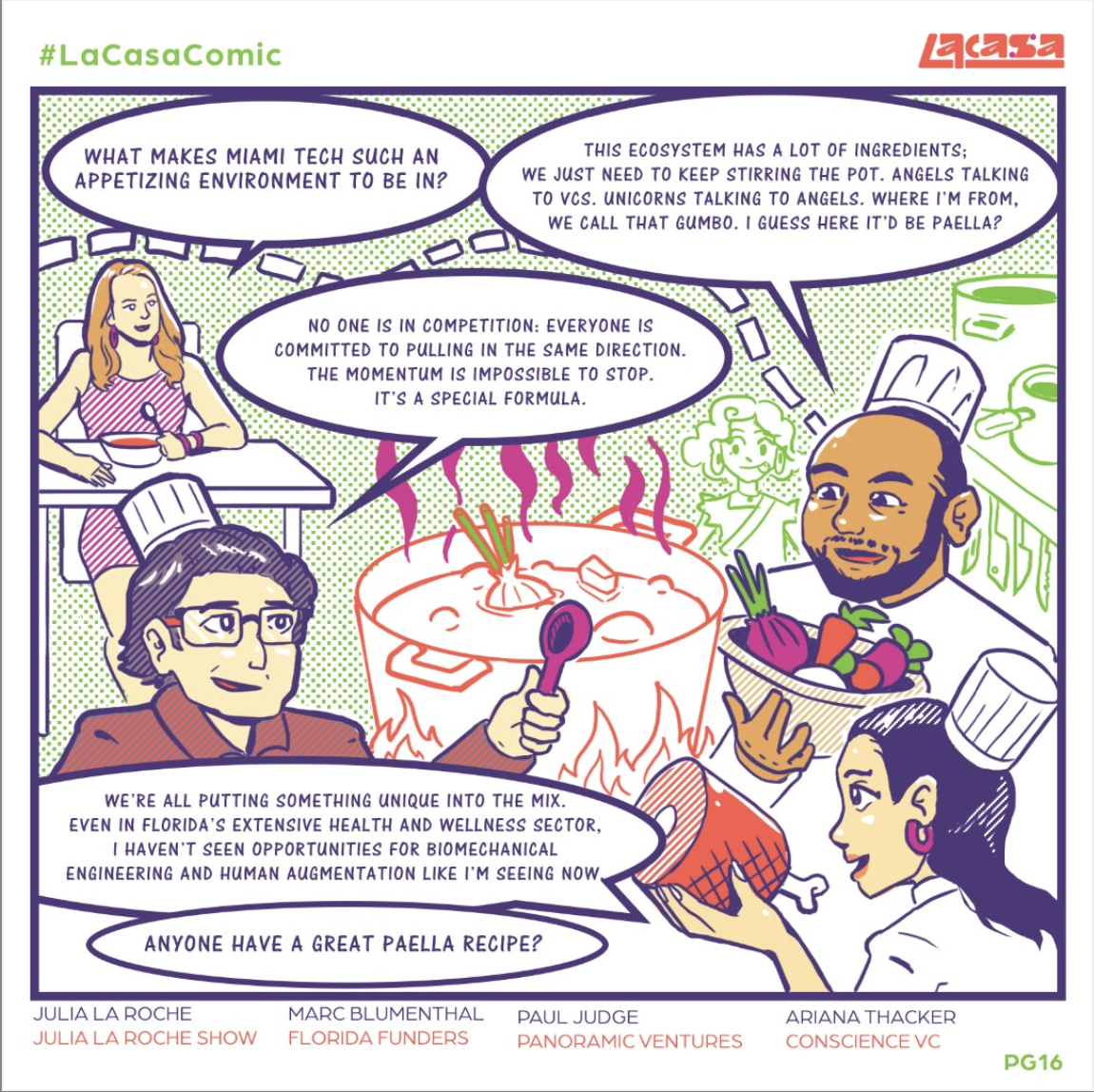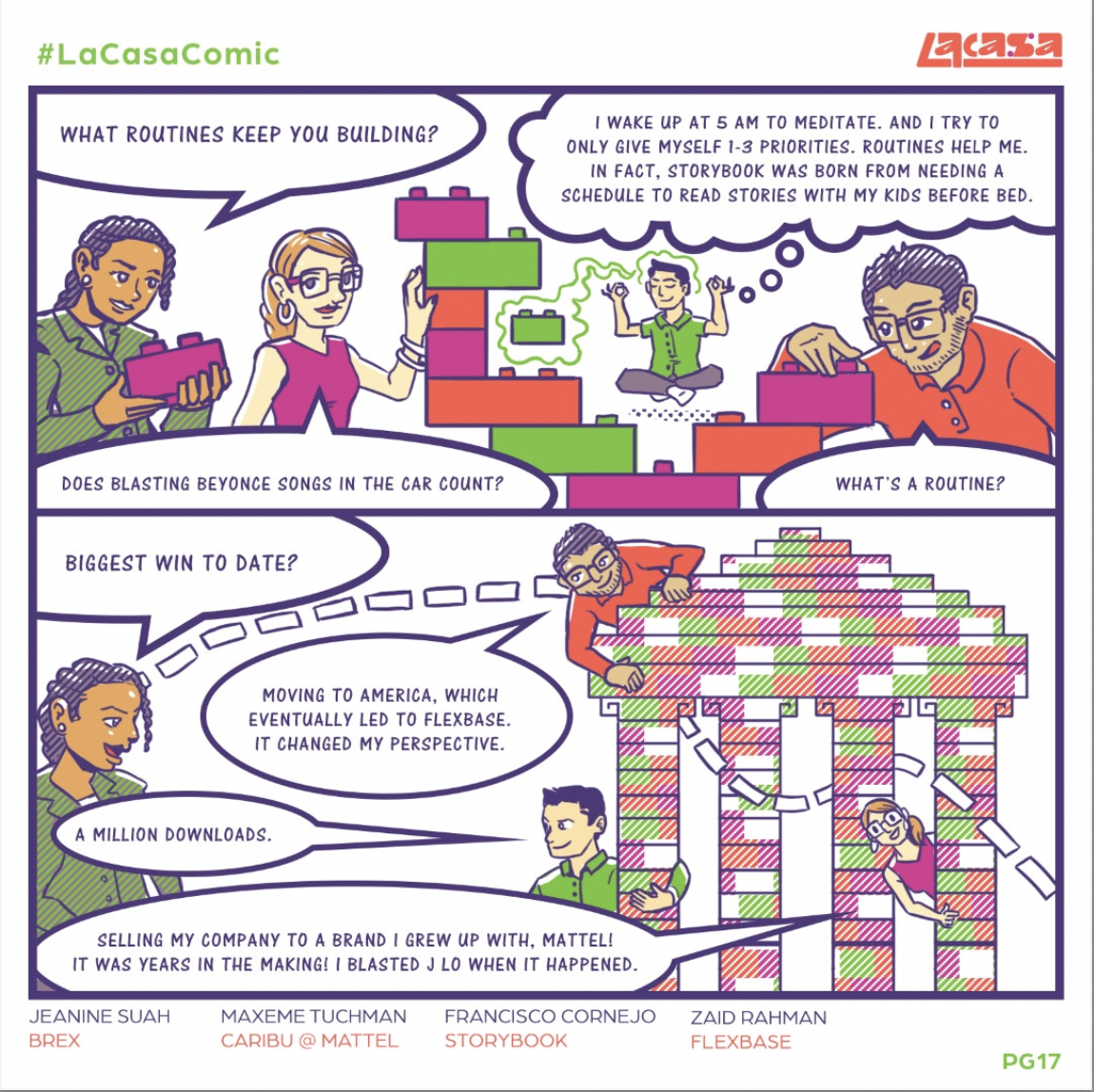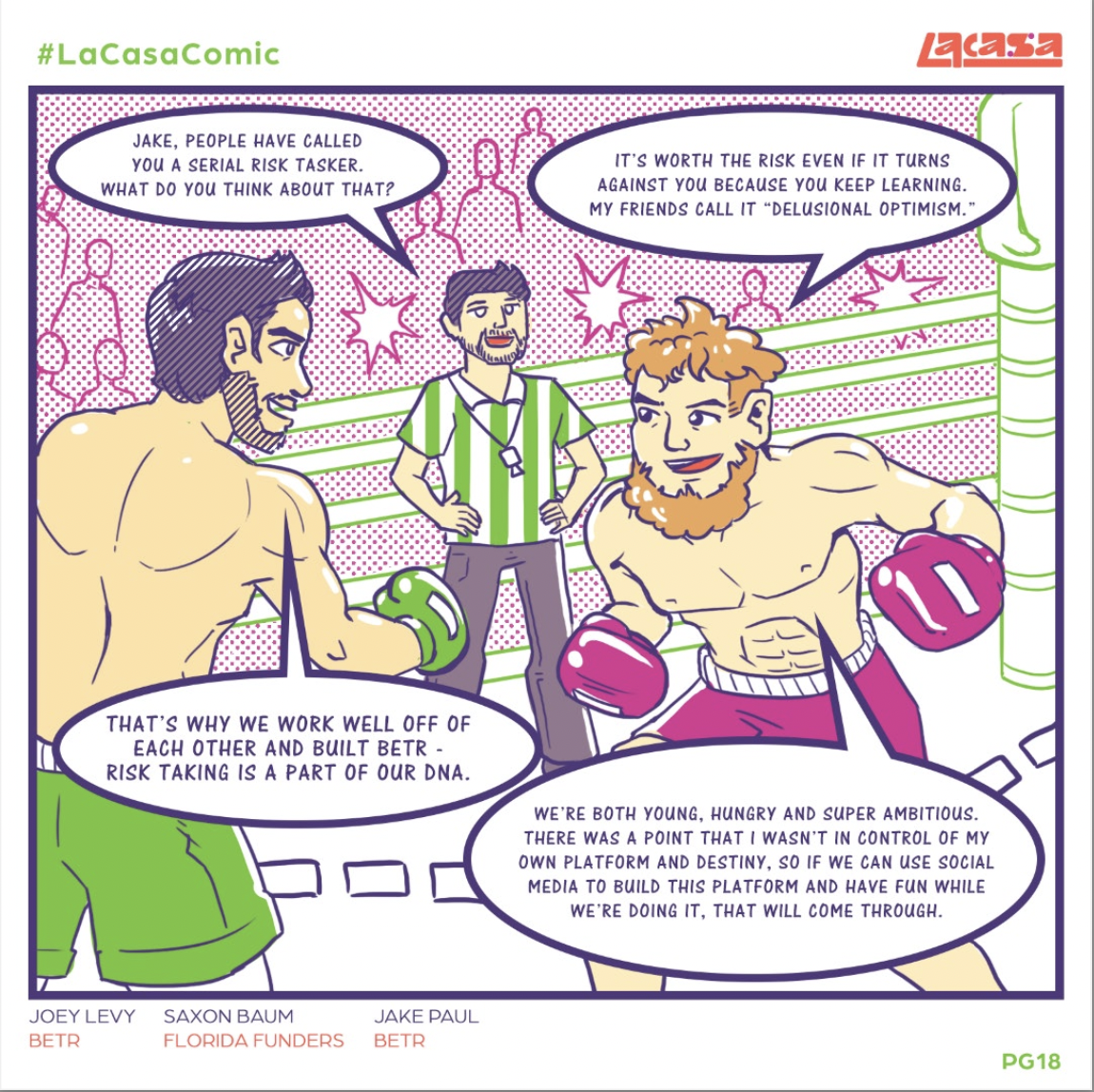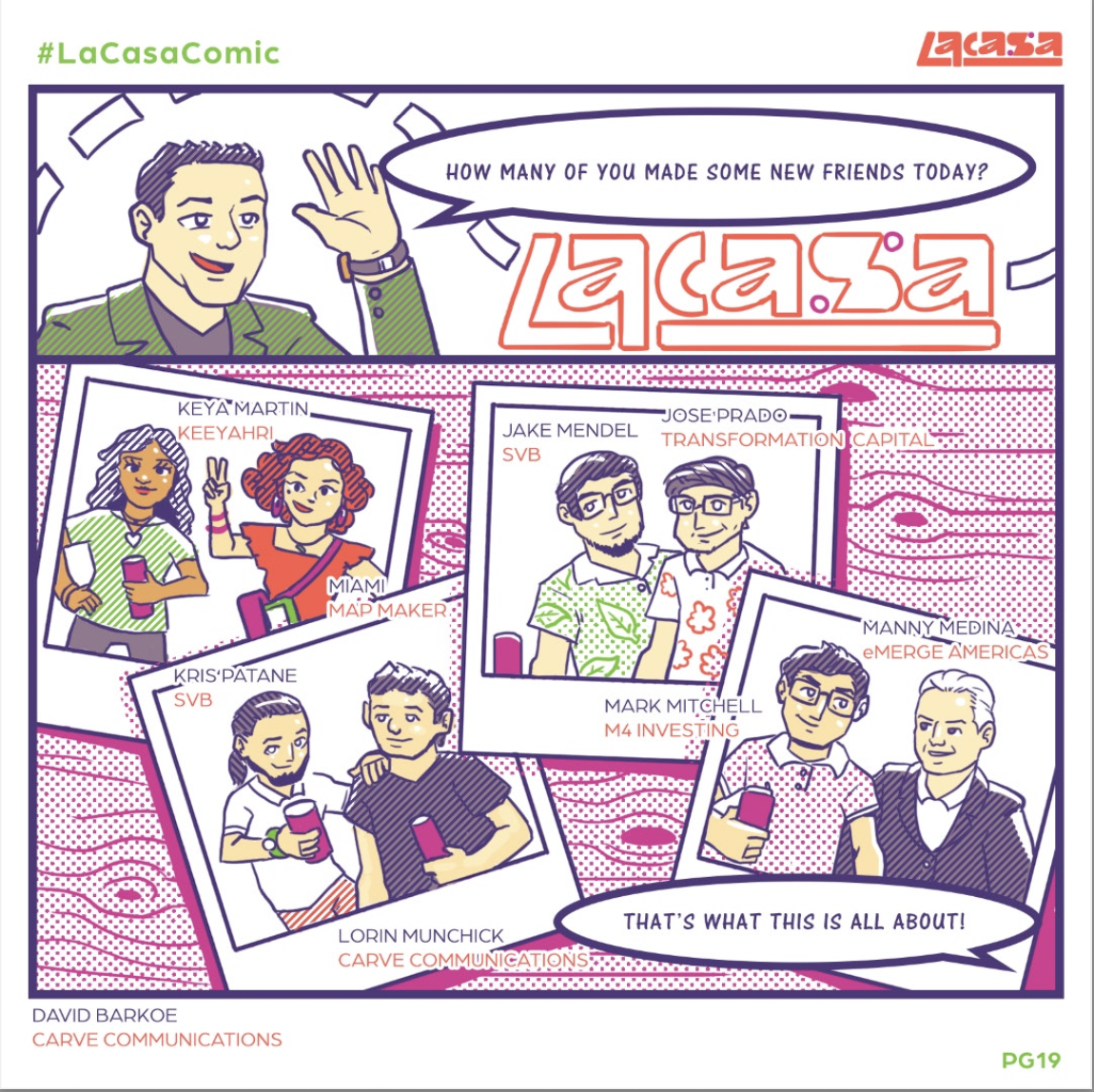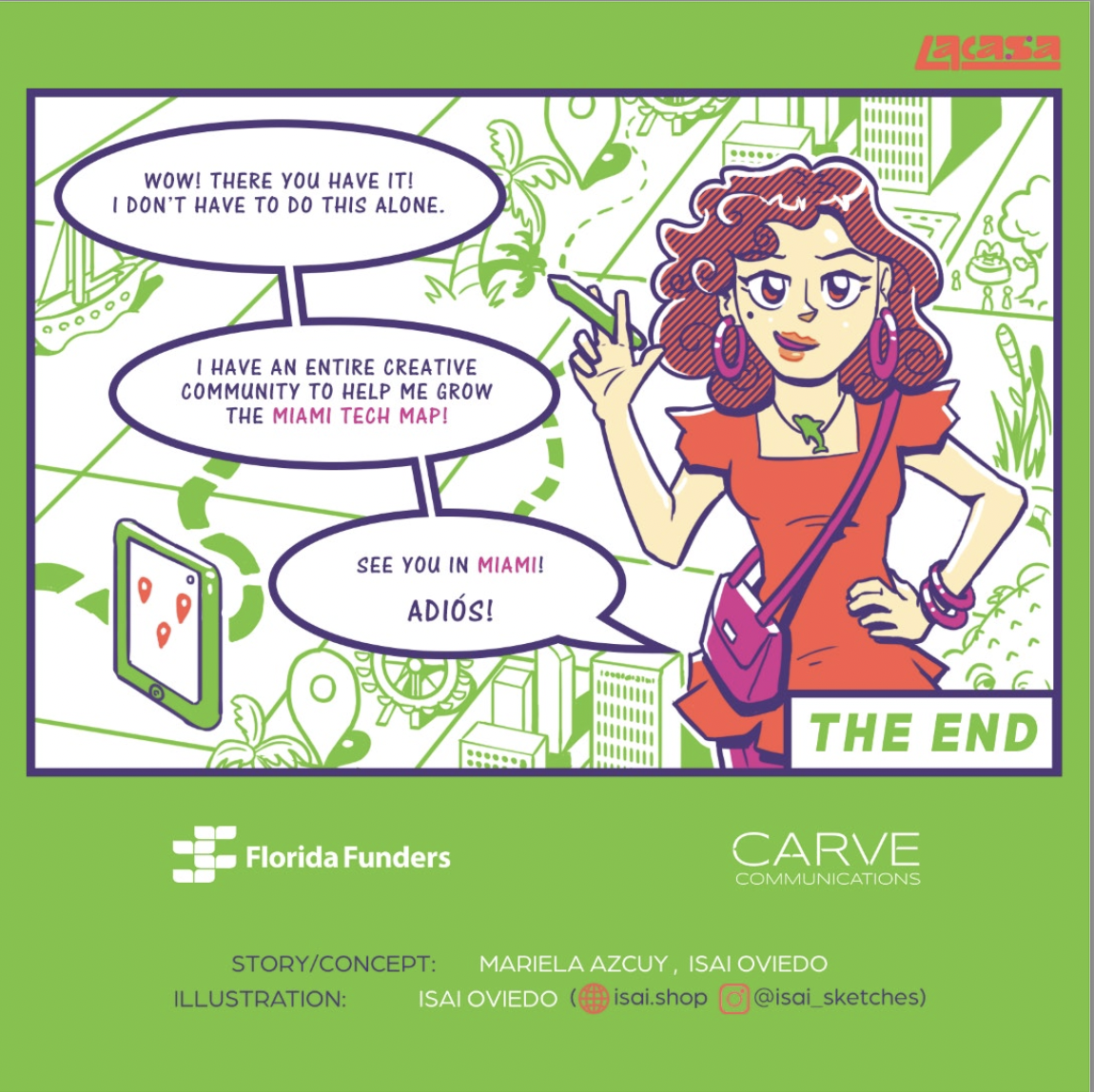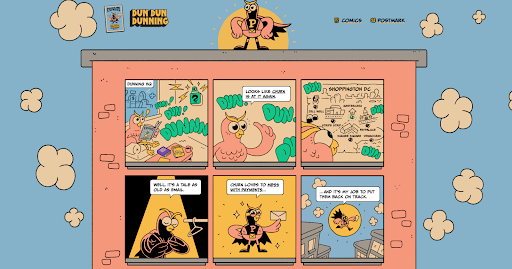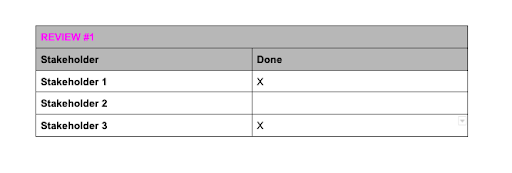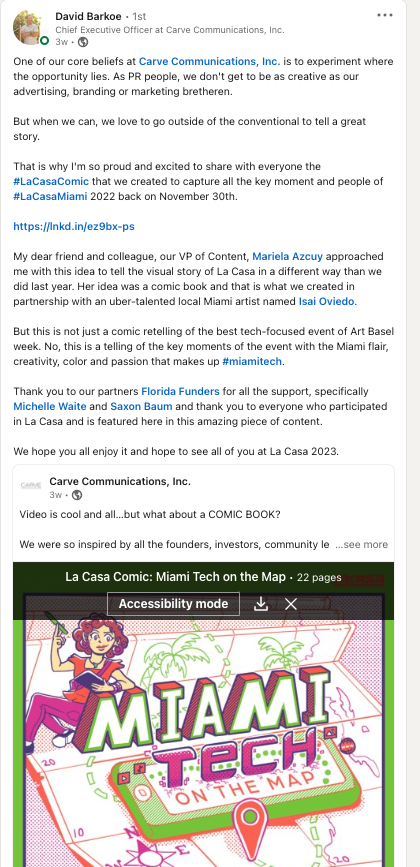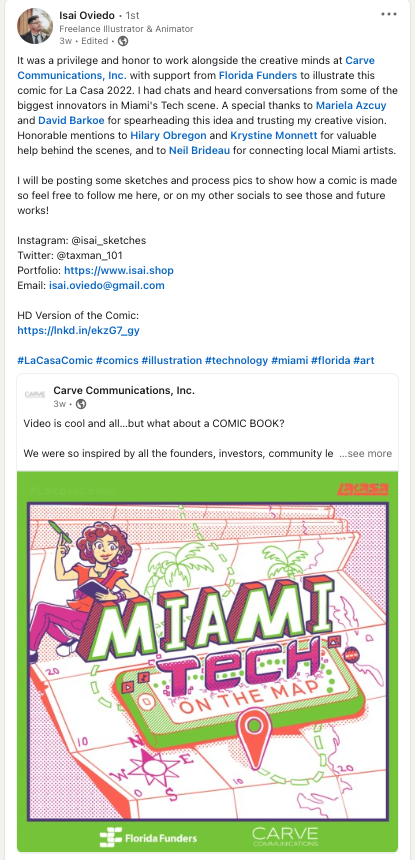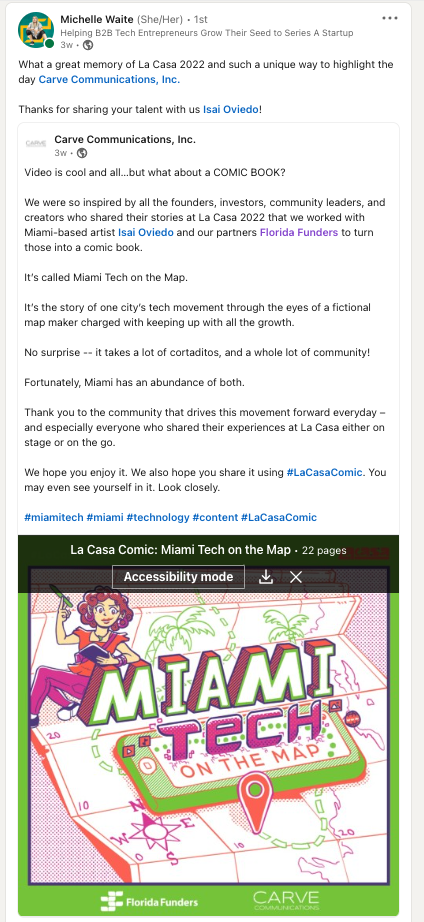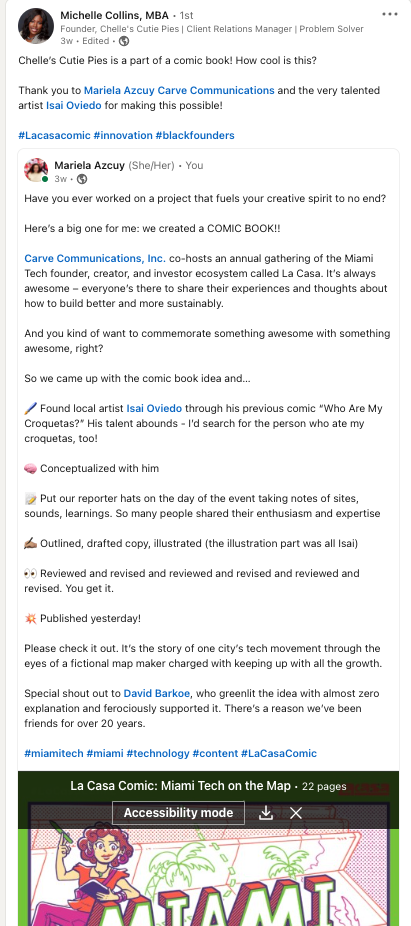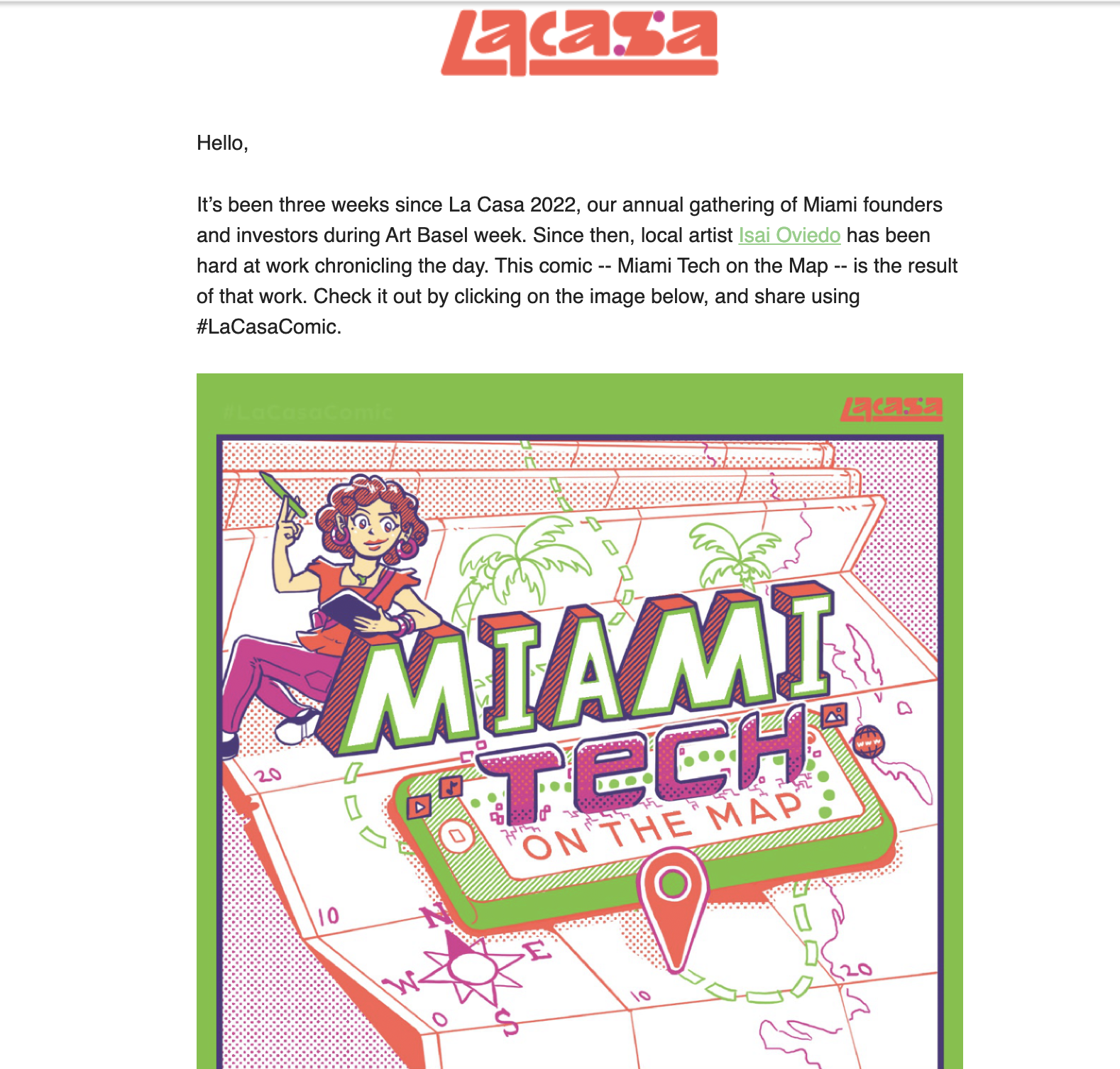From Idea to Execution: Learnings from a Comic Book Content Marketing Project
Published January 19, 2023
Everyone loves a big idea. Not everyone loves executing a big idea.
I can see why. When something's big, it can feel overwhelming. You may question if you can bring it to fruition — or how you will bring it to fruition. But, if you're being honest with yourself, the answer is usually: one step at a time (or bite if you're thinking of eating elephants).
I'm going to break down my learnings tied to bringing to life a content marketing project on behalf of Carve and our client, Florida Funders.
First, here's the end product: A comic book.
Second, the setup: Each year, we co-host a gathering of the Miami Tech community with eMerge Americas (our partners) and Florida Funders (our clients) called La Casa. Think of it as a conference and social hour(s) – during Art Basel week – rolled into one. Local entrepreneurs and founders share their journeys, and investors and community leaders share how they support those journeys.
We wanted to veer from the typical videos of years past and landed on a comic book as the event recap. The image below shares our "why:"
Here's what I learned from idea to execution tied to this comic book content marketing project:
You never know when cataloged inspiration will come in handy.
Become friendly with the save or bookmark function for your go-to social media sites. Better yet, create a system of your own for cataloging inspiration. Owned is better than borrowed, as they say.
I regularly use Evernote by saving pieces via its web clipper and noting both: 1) what about the piece struck me and 2) how I learned about it (since a lot of times the sharer of the information is not the originator of the piece).
These two points are crucial as your notebooks can grow fast and wild. When you detail those two pieces of information, the act of cataloging itself cements the inspiration in your brain. Ideas can then hatch at a moment's notice.
When I saved Postmark's comic-style content marketing in Evernote, I knew I'd love to try something like it for the right project. And La Casa turned out to be the right moment. Our previous year's videos were evergreen, so we didn't need another batch of video content so soon.
Note: more on how to catalog ideas here.
Outline your must-haves and leave no stone unturned in finding them
Finding the talent was the most critical element of bringing together the La Casa comic. My biggest advice here is to not bend on your "must-haves." These three things needed to come together for our project:
A comic book artist who matched the aesthetic we were seeking. For example, the artist's work needed to lean toward realism since we wanted to feature real people in the end result. This is harder than you think in a world where animals or objects sometimes reign.
They needed to be local and get the Miami "vibe." We couldn't promote a Miami Tech comic with a Portland-based artist. It would reek of inauthenticity. Still, you'll find many people urge you to go overseas or to other markets to cut costs.
They needed some interest or knowledge in the tech and startup world.
To find an artist with this profile, we tried local design schools, including Miami Ad School, networking at a Miami Maker Fair, and speaking with the Visual Storytelling Institute, along with the expected Google searches.
We were coming up dry. Until…I queried my (large) local mom's WhatsApp group, and someone there pointed me to Niel Brideau at Radiator Comics. In one fruitful conversation, he told me about a series of Sun and Sand comics he had organized celebrating the "wonderful weirdness of Miami." And that led me to "Who Ate My Croquetas" and local artist Isai Oviedo.
Ding. Ding. Ding – We had a winner. Maybe my bigger advice here is to not underestimate the power and scope of mom's groups – or any community you belong to?
Protect the Talent and the Idea
When you're collaborating with several organizations, things can get hairy. People have visions for what they want, which aren't often totally aligned — especially with creative projects. Creative projects tend to either make people uncomfortable or inspire them.
Understand the difference between input and ownership and make sure it's clear who gets what. Your collaborators should typically have input, but there should be one or two final decision makers — the project "owners." If not, you will drown in a sea of opinions.
The owner is responsible for protecting the talent and idea. Remember, without that, all the work is for not. You'll end up with something bland that surprises and delights nobody.
Note: I recommend trying the RACI matrix (Responsible, Accountable, Consulted, Informed) if you're working with many people at once; make sure everyone understands their role upfront. I didn't formally use it this time, but I have successfully in the past.
Input is still a crucial part of the output. Your project will go through several reviews, and that's okay. You want to avoid typos, misquotes, or incorrectly matched organizations and people in your end product. (Yes, we caught many of those during our review process, and thank our collaborators for that.)
Here's how we helped the process run smoothly:
The owner remains the single source of truth for the talent. The artist shouldn't be deluged with feedback from different directions.
Start a Google Doc that allows collaborators to add feedback per page. The project owner should review that feedback first to see if there's anything they can resolve before making it an action item for the talent.
We suggest adding a checkbox like this at the top of the document, so everyone knows when stakeholders are done with the current review. Don’t forget to give deadlines!
Don't Stop Distributing
Ross Simmonds advice rings true here and always: "Create Once. Distribute Forever." We developed a distribution plan before we even started the project since we also needed buy-in from collaborators. It included a landing page and a unique hashtag, brand and individual social feeds, brand newsletters, tagging people featured in the comic book, local PR, and more.
The comic launched toward the end of December, so we're currently in the "distribute forever" phase. Here's an example of some of our initial posts, including from people featured in the comic — our ambassadors!
Look at Results Holistically
Another thing we did before we started working on the comic was outline how we were going to measure results. Straight away, we knew it couldn't just be one metric; we'd look at a combination of things from website and social metrics to newsletter click-throughs, downloads, and hashtag usage.
Here's what we can share. We launched the La Casa Comic on December 20 and are so far seeing:
December was the #1 month for the Carve website in terms of both visits and pageviews for all of 2022
The La Casa landing page was #9 in terms of pageviews on the Carve site for all of 2022 (despite being distributed at the end of the year)
Visitors spent an average of 2.5 minutes on the La Casa landing page
63 PDF downloads on the landing page
Our December newsletter featuring the comic had the highest open and click rates of 2022
Our standalone email of the comic had the highest open and click rates of any email distribution in 2022
We also value the qualitative feedback, which included several incoming requests to discuss partnering with La Casa in 2023. And here's our favorite comment from one of our panel moderators, Expert in Residence at Brex Jeanine Suah.
Don’t let a good idea go unexplored because the thought of executing it feels overwhelming. Take a chance on your big idea, break it out into small steps, pool together your collaborators, and make that process as seamless as you can. Then take all your learnings and apply them to the next project. Creativity and execution are a virtuous cycle, fueling each other over and over again.
🔥🔥🔥🔥🔥🔥

